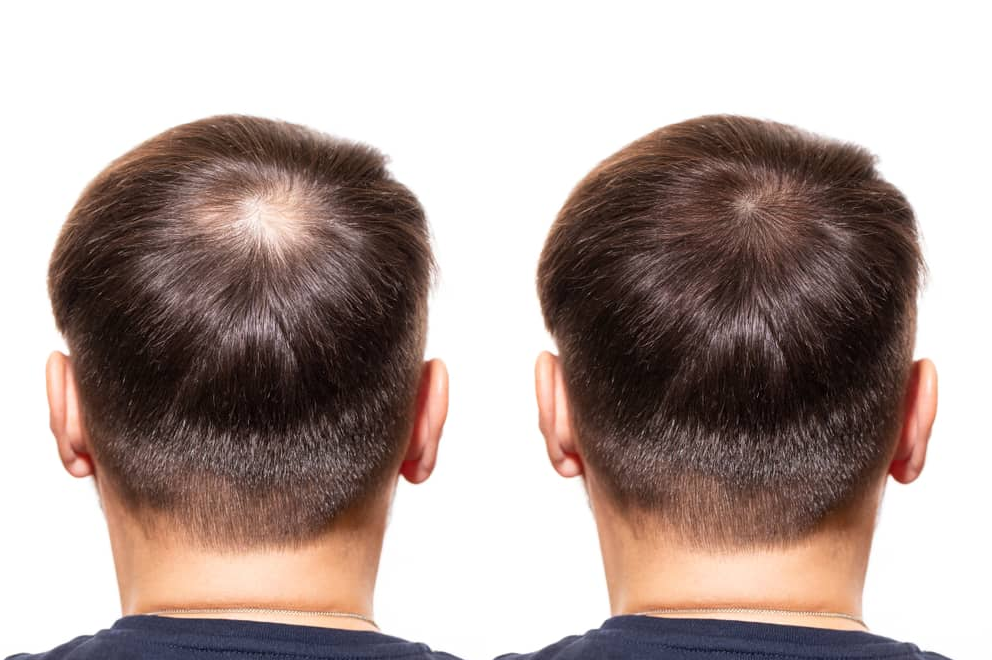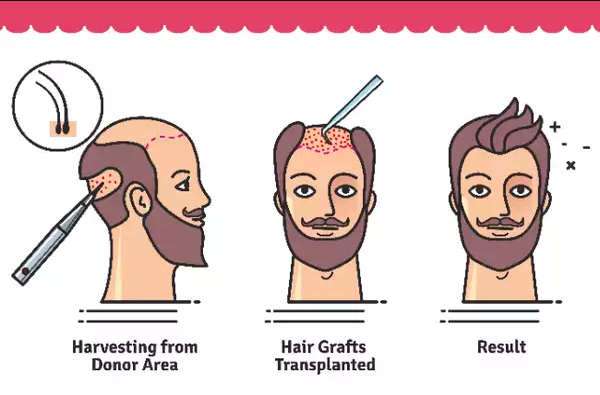A hair transplant is a medical procedure that involves moving hair follicles from one part of the body to another, typically from a dense hair area to one that is balding or thinning. If you’re wondering how does hair transplant work, it’s a process where healthy hair follicles from the donor region—often the back or sides of the head—are carefully transplanted into areas of the scalp that are experiencing hair loss.

This technique helps in restoring hair growth where it has stopped or thinned. The underlying idea is to make the best use of the hair follicles that are genetically resistant to balding and transplant them into areas where hair growth has slowed or ceased entirely.
All About The Hair Transplant Process
Hair transplantation has gained widespread popularity due to its effectiveness in treating hair loss, particularly male-pattern baldness, and other forms of alopecia. It provides a permanent solution to individuals who have tried medications or topical treatments with little success.
By taking hair from areas resistant to balding, the results often look natural, and the patient can enjoy a fuller head of hair without the need for continuous treatments. However, it’s important to understand the different procedures available, the potential risks, and what to expect post-surgery to make an informed decision about undergoing a transplant.
Methods of Hair Transplantation
There are two primary techniques used in hair transplantation: Follicular Unit Transplantation (FUT) and Follicular Unit Extraction (FUE).
- Follicular Unit Transplantation (FUT): In the FUT method, a strip of scalp is removed from the donor area, typically the back of the head. This strip is then dissected into individual follicular units, which are implanted into the balding regions. This technique is useful for patients needing a larger number of grafts, as it allows for the extraction of a significant number of follicles in one go. However, it does leave a linear scar that may be visible if the hair is cut short.
- Follicular Unit Extraction (FUE): FUE is a more modern, less invasive technique. It involves the extraction of individual hair follicles from the donor area using a small, circular punch. These follicles are then transplanted to the balding areas. FUE doesn’t leave a large scar, but the procedure may take longer due to the precision required in extracting and transplanting individual follicles.

Why Choose Hair Transplantation?
Hair transplantation is a reliable solution for individuals experiencing hair loss. Unlike temporary treatments like hair fibers, sprays, or medications, a hair transplant offers a permanent solution.
Furthermore, the transplanted hair grows naturally, which means the results blend seamlessly with the surrounding hair. This procedure is particularly appealing to people who have reached a stage of hair loss where non-surgical treatments are no longer effective.
Additionally, the recovery time for hair transplants is relatively short, and most patients can return to work within a few days. This is a key reason why it is seen as one of the best treatments for long-term hair restoration.
The Recovery Process
The recovery process is an essential part of a successful hair transplant. After the procedure, patients typically experience some swelling, scabbing, or minor discomfort.
The transplanted hair will fall out within the first few weeks, which is normal. It’s important to follow the surgeon’s aftercare instructions carefully to avoid infection or damage to the newly implanted follicles.
Most people can return to work within 2-5 days, though strenuous physical activities should be avoided for a few weeks. New hair growth generally begins within 3 to 6 months, with the final results visible after 12 to 18 months.
Debunking Myths About Hair Transplants
There are several misconceptions about hair transplants. Let’s take a closer look at some common myths and the facts behind them:
- Myth: Hair Transplants Are Only for Older People. Fact: Hair transplants can be performed on individuals of various age groups. However, waiting until hair loss has stabilized is generally recommended, which can vary depending on the individual.
- Myth: Transplanted Hair Doesn’t Grow Naturally. Fact: Transplanted hair grows naturally, just like the rest of the hair. The hair follicles taken from the donor area are genetically programmed to continue growing in their new location.
- Myth: The Procedure is Extremely Painful. Fact: Most people report minimal discomfort during and after the procedure. Local anesthesia is used to numb the scalp, and any post-surgical discomfort is usually managed with medication.
- Myth: Results Are Immediate. Fact: It takes several months for transplanted hair to begin growing and show visible results. The process is gradual, with the final results becoming apparent within 12-18 months.
- Myth: Hair Transplants Are Expensive and Unaffordable. Fact: While hair transplants can be costly, prices vary depending on the procedure and the extent of hair loss. Viewing it as an investment in self-confidence and appearance is essential, and financing options are often available.

What is the Best Hair Transplant Method?
The “best” method of hair transplantation largely depends on individual circumstances.
- For minimal scarring and quicker recovery: FUE is often preferred, especially for those who want to avoid a visible scar at the back of the head.
- For larger sessions and better graft survival: FUT may be the ideal choice, particularly if the patient requires a high number of follicles transplanted in one session.
Both methods are proven to be effective, so the choice should be made based on consultation with a qualified surgeon who can assess the patient’s unique needs.
Frequently Asked Questions
How long does a hair transplant take?
A typical hair transplant procedure can take anywhere from 4 to 8 hours, depending on the number of grafts being transplanted. In some cases, it may take more than one session.
How long will it take to see results after a hair transplant?
It can take between 3 and 6 months for new hair growth to become noticeable, with the final results often visible after 12 to 18 months.
Are hair transplants permanent?
Yes, hair transplants are generally permanent because the transplanted follicles are resistant to the hormone that causes hair loss. However, surrounding non-transplanted hair may continue to thin over time.

Is there any downtime after the procedure?
Most people can resume normal activities within a few days, though strenuous activities or heavy exercise should be avoided for a few weeks. Any swelling or discomfort can usually be managed with prescribed medications.
Can women undergo hair transplants?
Yes, women can also undergo hair transplants, especially if they suffer from conditions like female-pattern baldness. However, the procedure might be less effective in certain cases where the hair loss is widespread or diffuse.
Other Considerations
Hair transplant results are highly dependent on the skill of the surgeon and the health of the donor’s hair. It’s essential to choose a qualified, experienced professional to ensure the best possible outcome. Additionally, aftercare is crucial to the success of the transplant, including following post-operative instructions to avoid complications like infections or poor graft survival.
Lastly, a hair transplant is just one option for addressing hair loss. It’s important to explore all potential treatments, such as medication, laser therapy, and lifestyle changes, to find the solution that best suits your needs.
In conclusion, hair transplants are a safe and effective way to restore hair in areas that have thinned or gone bald. By understanding how the process works, debunking myths, and knowing the best techniques available, you can decide whether this procedure is right for you.
